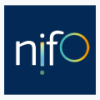On 26 April 2022, the National Interoperability Framework Observatory (NIFO), which is part of the Interoperable Europe programme, held an online webinar gathering the NIFO contact points of European countries and other stakeholders from the public and private sectors to discuss the European Interoperability Framework (EIF) Monitoring Mechanism and hear from the experience of EU countries in the field of interoperability governance.

During the webinar, a short presentation of the key elements of the EIF and its monitoring mechanism was given as well as a high-level presentation of the 2021 results at the EU level. This was followed by the presentation of a preliminary analysis of the main trends after three years of monitoring in the EU countries.
A strong rate of progress has been identified in the following areas over the last 3 years:
- Assessment of the effectiveness and efficiency of EU solutions and services – Significant efforts have been made to reduce the administrative burden (triggered by the Once-only principle) and a shift towards a user-centric approach and a balance between costs and benefits has been identified.
- Reusability and sharing of information and solutions when implementing public service –Multiple factors have contributed to the increase in this area, such as the creation of national collaborative platforms and catalogues to facilitate the reuse, sharing and development of IT solutions, the use of APIs by public administrations to facilitate this reuse, and the use of a common reference architecture to manage generic and reusable building blocks.
- Organisation interoperability – Greater consistency and a simplified process for aligning and documenting business processes have been identified. In fact, more and more modelling techniques (e.g., Business Process Modelling Notation, Unified Modelling Language (UML) Diagrams) are being used to document business processes.
- Semantic interoperability – EU Countries are increasingly working on agreements, taxonomies, controlled vocabularies and reusable data structure/models to achieve semantic interoperability. This might have been triggered by the ‘once-only’ principle, which aims to avoid duplication and fragmentation, and by the use of open data, encouraged by the EU Data Strategy.
- Base registries – More and more EU countries have base registries (e.g., of population, vehicles, taxes, land and businesses) that include agreements on reference data, e.g., taxonomies, controlled vocabularies, thesauri, code lists and reusable data structures/models.
- Open data – There is an increase in the proportion of data available in a machine-readable format, which promotes the use of data by others and stimulates transparency, fair competition, innovation and a data-driven economy. Many countries have established procedures to integrate open data into their business processes, work routines and the development of new information systems.
More detailed information on those signs of progress is to come in the soon-to-be-published State-of-play report on digital public administration and interoperability 2022.

The second part of the webinar was dedicated to the sharing of good practices in the field of interoperability governance. We had the pleasure to welcome three guest speakers:
- João Ricardo Vasconcelos, Senior Governance Specialist, GovTech – Governance Global Practice at the World Bank - He gave a presentation on interoperability towards a Data-driven Public Sector and shared good practices around interoperability governance of non-EU countries, and the latest developments on the GovTech Maturity Index.
- Antoine CAO, Digital Accessibility Programme Manager, at Interministerial Digital Directorate of France (DINUM) – He provided an overview of the French interoperability governance model and the application of the French General Interoperability Repository (RGI) since 2016.
- Roberto POLLI, Full-Stack Developer, Digital Transformation team at the Italian Government - He presented the interoperability governance model of Italy, and the Italian API interoperability framework contributing to global standards.
The three presentations were followed by a panel discussion on:
- The main challenges they faced in defining and establishing strong governance around interoperability with other entities to achieve common goals; and
- The main roles and responsibilities within their interoperability governance model.
More information on the answers provided by the speakers is available in the slide-deck presentation (please see the link below the article).

One of the newest features of the EIF toolbox was presented - legal screening of relevant EU pieces of legislation - which contributes to the implementation of the EIF recommendations. The screening currently includes 21 pieces of legislation related to interoperability fostering and relies on an analysis of more than 150 legal provisions.
This exercise was performed for all EIF components, i.e., the interoperability Principles, Layers, and Conceptual model, and at the recommendations level. One EIF component is not yet covered: External information sources and services (Conceptual model).
In order to gather more needs to further improve the legal screening feature on the toolbox, an online survey was launched and initial feedback on the usefulness and shortcomings of this feature was presented during the webinar.
We kindly invite you to complete this survey, until 13 May 2022, to collect your needs so as to keep shaping this feature around what benefits you most. Thank you!

The last part of the webinar was dedicated to collecting feedback on how to improve the data collection for the 2022 edition.
Finally, we would like to invite you to the next NIFO Coffee talk on 18 May, which will focus on how the EIF has helped EU countries to achieve a higher level of interoperability.
For further details, the slide-deck presentation with Q&As is available here and the recording of the webinar is available here.
On behalf of the NIFO team:


